Key takeaways:
- Culinary education combines hands-on practice with theoretical knowledge, enhancing cooking skills and creativity.
- Group cooking fosters collaboration, accountability, and cultural exchange, enriching the culinary experience.
- Successful group cooking requires clear communication, appropriate recipe selection, and a fun atmosphere to build memories.
- Shared cooking experiences strengthen relationships and create lasting connections among participants.
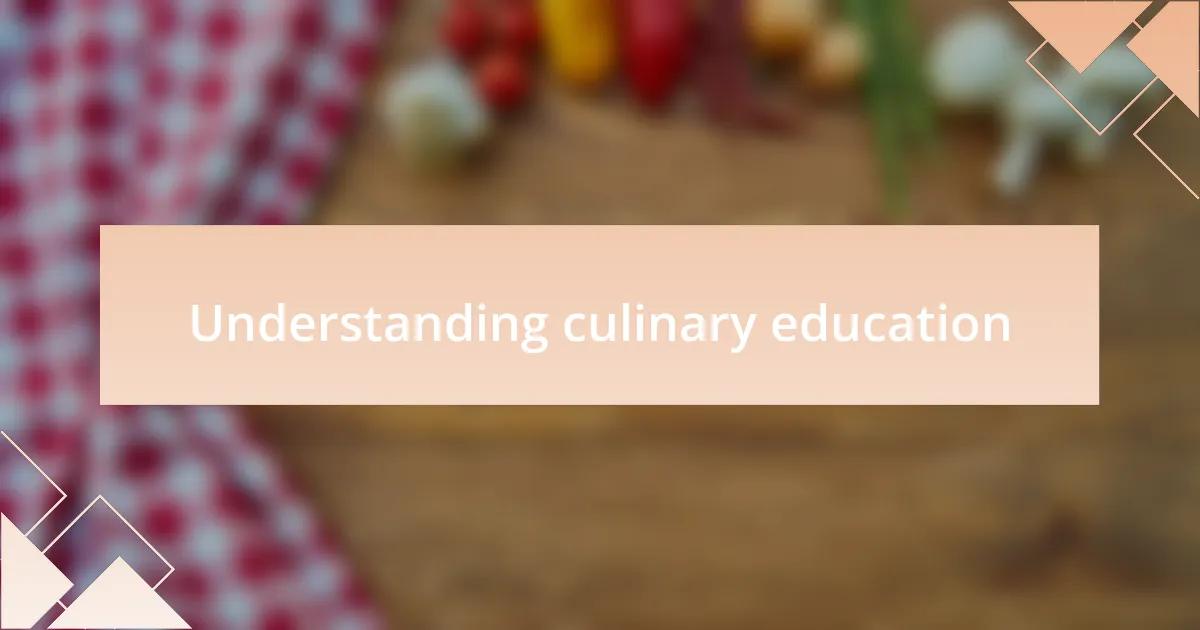
Understanding culinary education
Culinary education goes beyond just learning recipes; it’s about grasping the intricate dance of flavors, techniques, and food culture. I remember the first time I stood in a bustling kitchen classroom, overwhelmed yet exhilarated by the symphony of sizzling pans and aromatic herbs. That sense of immersion truly changed my perspective on food – it made me realize that cooking is an art form waiting to be explored.
In my experience, effective culinary education emphasizes the balance between hands-on practice and theoretical knowledge. Why is it crucial to understand the science behind cooking? I learned that knowing the ‘why’ helps us become more intuitive cooks, allowing us to adapt recipes and innovate confidently. For instance, understanding emulsification transformed my approach to sauces; it wasn’t just about mixing oil and vinegar anymore, but creating something cohesive and delicious.
Moreover, culinary education provides a platform for personal expression and cultural understanding. When we cook, we are telling a story, and each ingredient represents a piece of that narrative. I still cherish the moments spent cooking dishes from my heritage alongside classmates from diverse backgrounds; those sessions were more than just lessons – they were exchanges of culture and tradition that deepened my love for gastronomy.
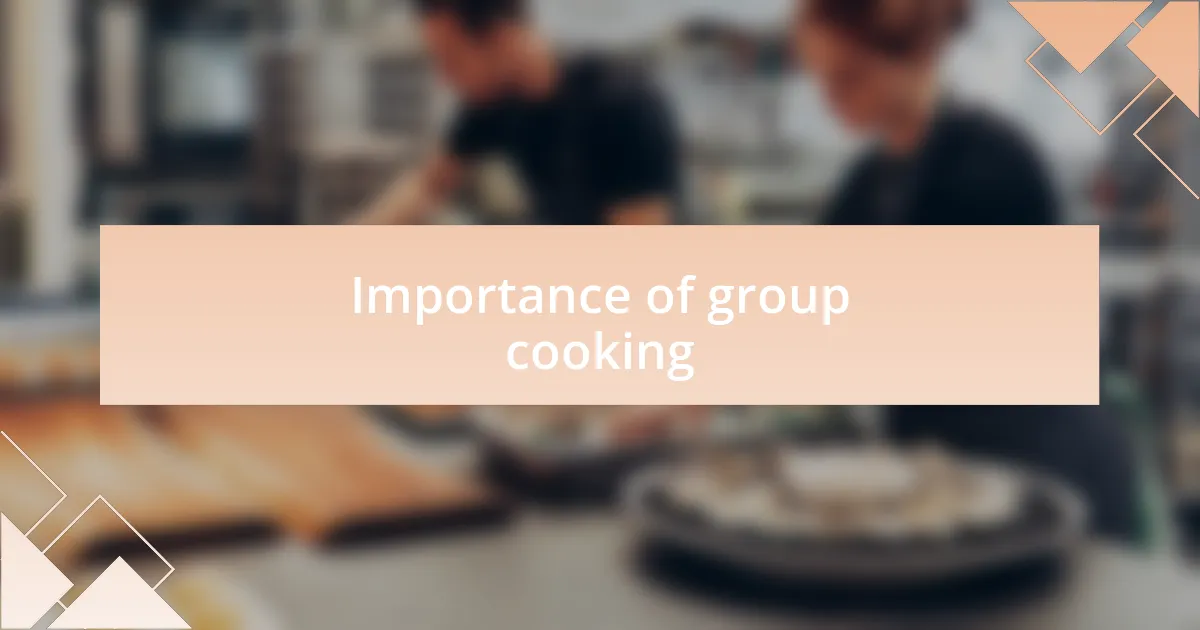
Importance of group cooking
Group cooking activities hold significant importance in culinary education, fostering collaboration and enhancing social skills. I vividly recall an evening where my classmates and I teamed up to prepare a multi-course meal. The laughter and camaraderie in that shared space transformed a simple cooking session into a memorable bonding experience, proving how food can unite us in profound ways.
Additionally, cooking together cultivates a sense of accountability and teamwork. In one of my group projects, we divided responsibilities to create a themed dinner, and it taught me how essential communication is. Have you ever found yourself in a situation where clarity made all the difference? I learned that when everyone understands their role, not only is the process smoother, but the final outcome is often more delicious than we could have imagined.
Moreover, group cooking allows us to share knowledge and techniques, enriching our culinary repertoire. I still remember my friend demonstrating her unique method for chopping herbs efficiently; that simple tip has remained invaluable. Isn’t it fascinating how we can learn something from each other that brings a new dimension to our cooking? In essence, these shared experiences create a collaborative learning environment that is both enriching and fun.

Benefits of cooking together
Cooking together presents a delightful opportunity to bond with others while sharpening our culinary skills. I remember one weekend when a few friends and I decided to tackle homemade pasta. The process was messy, with flour flying everywhere, but the laughter we shared made it one of the best days of the year. Isn’t it interesting how food can forge connections, turning everyday moments into lasting memories?
Moreover, there’s something incredibly satisfying about creating a meal as a group. In one instance, my cooking circle decided to try our hands at foreign cuisines, each member bringing a different dish to the table. The exchange of flavors allowed us to appreciate diverse cultures while also igniting friendly competition about who could create the most authentic recipe. Have you ever tasted a dish and felt transported to another part of the world? That’s the magic of cooking together—each bite tells a story.
Finally, group cooking fosters creativity and experimentation. I recall when we decided to host a “mystery ingredient” night, using only what we had on hand to concoct a meal. The unpredictable nature of the challenge pushed us to think outside the box. How often do you find yourself stepping outside your comfort zone? Those moments not only enhanced our problem-solving skills but led to some surprisingly delicious results—proof that collaboration can yield remarkable outcomes in both life and cooking.
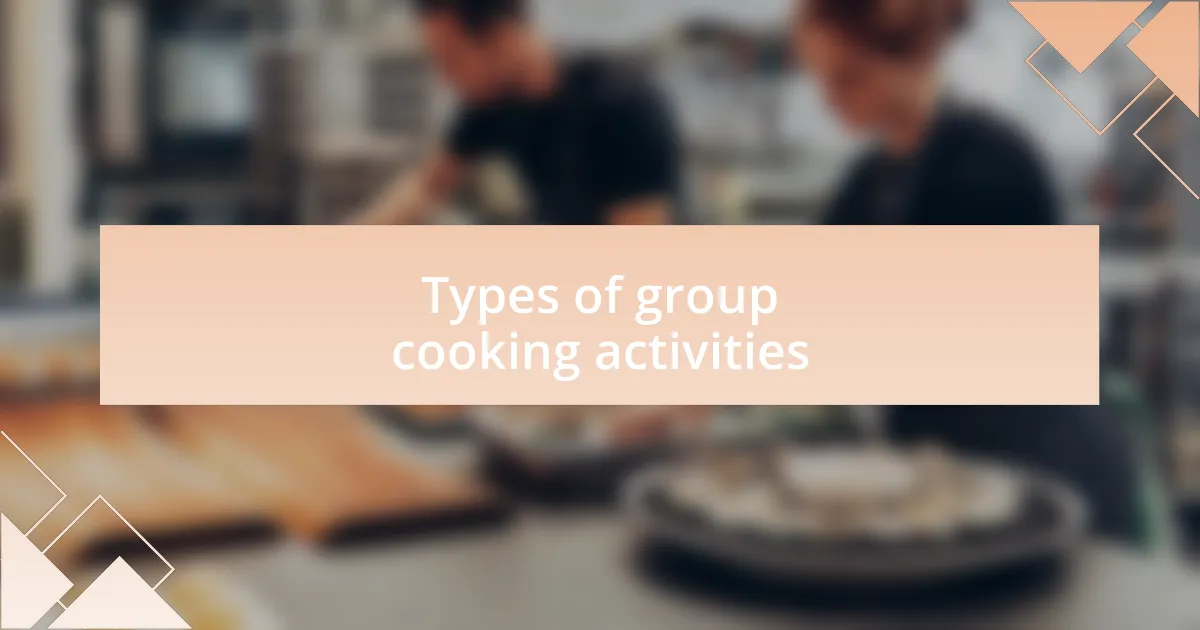
Types of group cooking activities
When it comes to group cooking activities, there’s a variety that can cater to different preferences and skill levels. One of my favorites is the themed cooking night, where everyone contributes to a cuisine or ingredient theme. I once hosted a “Taco Night” where each person brought the ingredients for their unique filling and toppings. It turned into a creative explosion of flavors and styles, highlighting how even a simple food item can be reinvented.
Another engaging option is a cooking class, which can be instructional and fun at the same time. I remember participating in a sushi-making workshop with friends. The instructor guided us while we laughed and fumbled with the delicate seaweed. Learning together not only made the process enjoyable but also equipped us with skills that we could bring home for future gatherings. Have you ever tried to replicate a dish you learned about in a class? It adds an excitement to cooking that I cherish.
Let’s not forget the joy of potluck dinners. These events allow everyone to showcase their culinary flair, leading to a delightful spread of diverse dishes. I once attended a potluck, and the array of flavors left me inspired. Each dish had a story, a personal touch from the cook. It’s fascinating how sharing food can also share pieces of our lives, don’t you think? Potlucks remind me that cooking can be more than just a task; it’s a celebration of community and connection.
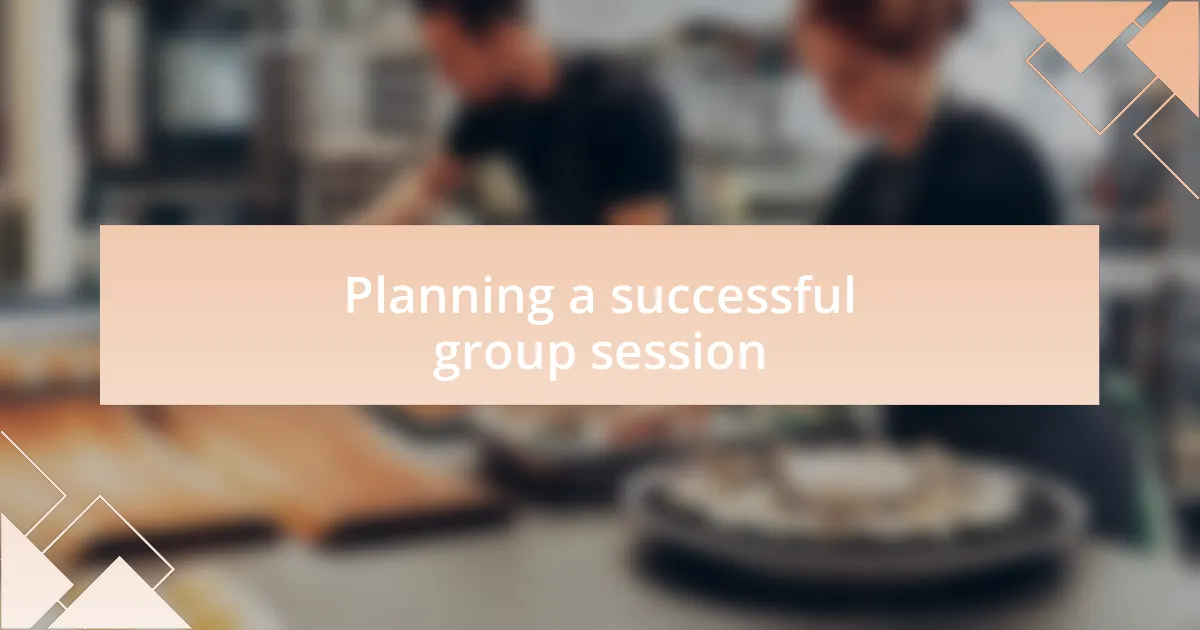
Planning a successful group session
When planning a successful group cooking session, clear communication is crucial. I once struggled with a cooking day because we hadn’t discussed everyone’s dietary restrictions upfront. This oversight led to a bit of chaos in the kitchen, and I felt embarrassed when one friend couldn’t eat what we prepared. It taught me that taking the time to ask about preferences and allergies ensures everyone feels included and can enjoy the activity together.
Choosing an appropriate recipe that matches the skill level of all participants also plays a significant role in the event’s success. I recall selecting a complicated dish for a group of novice cooks, and the frustration in the room was palpable. By opting for a simpler recipe, we could focus on enjoying the process instead of stressing over techniques. Going forward, I make it a point to encourage input from everyone on what they’re interested in cooking, which fosters excitement and investment in the meal we’ll create.
Lastly, I believe that setting a collaborative and fun atmosphere can transform the experience. I once facilitated a cooking session where we spun a wheel of ingredients for our dish and let spontaneity guide us, resulting in unexpected and delicious combinations. This made for delightful conversations and laughter, reminding me that the goal is not just to cook but to build memories. How do you envision your next cooking gathering? Making it light-hearted can truly enhance the team spirit.
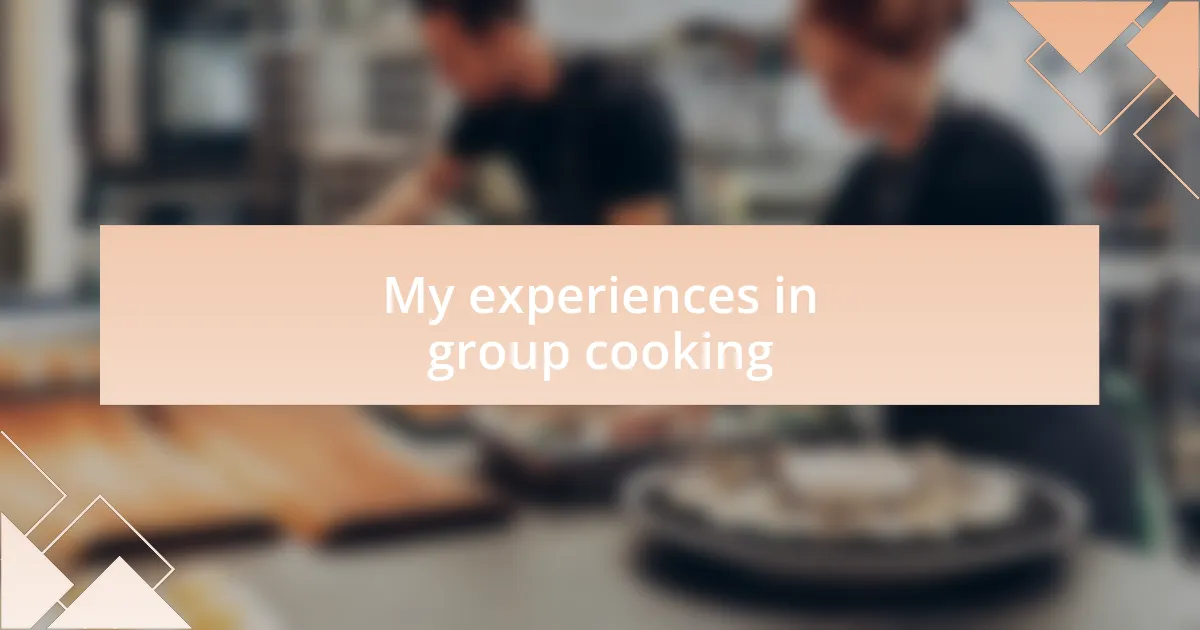
My experiences in group cooking
My experiences in group cooking have always been a blend of joy and occasional chaos. I remember one time when we decided to make homemade pasta. The moment we started kneading the dough, laughter erupted as flour dusted our clothes and our faces, turning the kitchen into a mini flour storm. Have you ever experienced that delightful mess that just makes a cooking session unforgettable?
There have been instances when my expectations clashed with reality, particularly during a themed dinner night. I imagined everything going smoothly, but as we attempted to replicate gourmet dishes, I realized that not everyone was on the same page skill-wise. The kitchen, instead of being a place of joy, almost became a battleground of frustrations. I learned the importance of adaptability; sometimes, it’s okay to pivot mid-session and turn a mishap into a new, simpler dish that everyone can enjoy together.
What truly stands out in my group cooking experiences is how cooking can deepen relationships. I recall one evening where we divided into teams, and I found myself bonding over chopping vegetables and sharing stories. Cooking together created a unique atmosphere where we not only prepared a meal but also nourished our friendships. Have you ever felt that connection while cooking with others? It’s a reminder that the best dishes don’t just come from recipes; they come from shared moments around the table.